Masterpiece Story: The Climax by Aubrey Beardsley
Aubrey Beardsley’s legacy endures, etched into the contours of the Art Nouveau movement. His distinctive style, marked by grotesque imagery and...
Lisa Scalone 27 October 2024
When you think of Catalonia, and especially Barcelona, the first name that comes to mind is, of course, that of Antoni Gaudí, but Catalan art at the turn of the 20th century is much more than just Gaudí’s work. Join us today to discover the works of Ramón Casas, one of the leading representatives of Catalan modernism.
Ramón Casas was born in 1866 in Barcelona to a wealthy family. His father made a fortune in Cuba and his mother came from a family that had money for generations. This gave young Casas a bit more freedom to decide his future, as money was not an issue. By 1881, at the age of 15, Casas had already co-founded a magazine, L’Avenç, and began his first stay in Paris where he joined the Carolus-Duran Academy and later the Gervex Academy. Within the next two years he exhibited his self-portrait dressed as a flamenco dancer at Salon des Champs Élysées.

Ramón Casas, Self-Portrait, 1883, Museu Nacional d’Art de Catalunya, Barcelona, Spain.
From then on he shared his time between Spain and Paris, traveling frequently and developing his style. This is also when he met Santiago Rusiñol, who would become a life-long friend and with whom he often collaborated. They published a few books together with text by Rusiñol and illustrations by Casas.
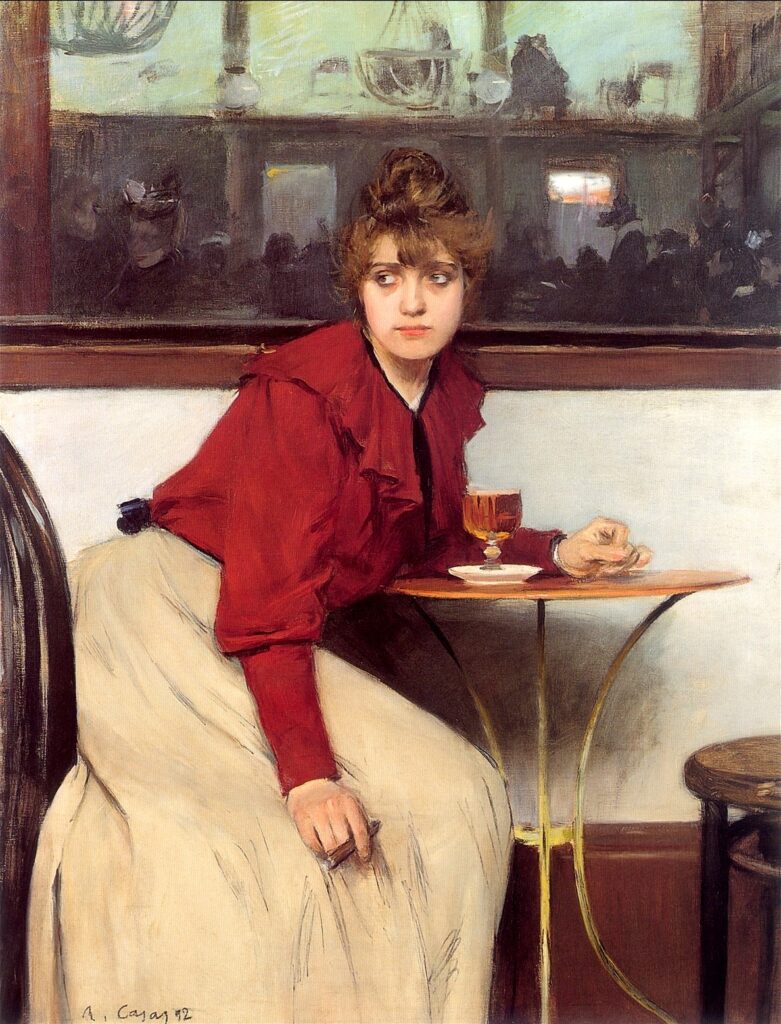
Ramón Casas, Au Molin de la Gallete, 1892, Museum of Montserrat, Montserrat, Barcelona, Spain.
His works from that time are heavily influenced by what he learned and observed in Paris, such as the works of the Impressionists. The modernisme (as Catalan modernism is also called) had not yet fully coalesced, but during the 1890’s, the necessary foundations were being laid, and Catalan artists formed connections that would eventually evolve into a coherent style known also as Catalan Art Nouveau.
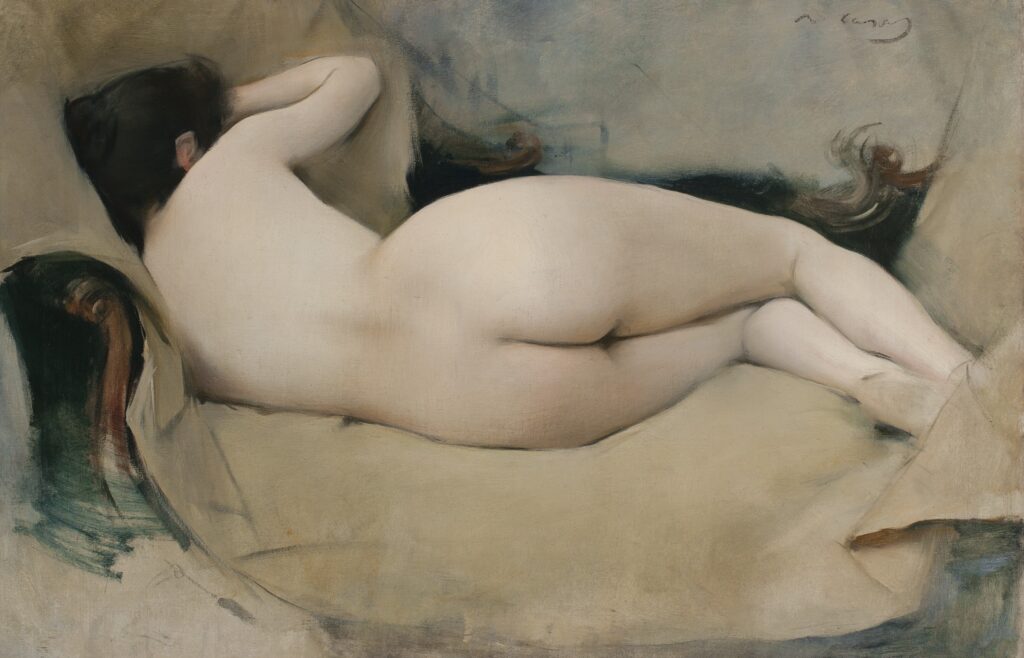
Ramón Casas, Female Nude, 1894, Museu del Cau Ferrat, Sitges, Spain.
Ramón Casas exhibited regularly, his works finding appreciation first in various salons, and gradually also from the broader public. His works were exhibited internationally, including Berlin and Chicago. At the same time, the Catalan group of artists started also organizing regular shows in Barcelona and Sitges (yes, Sitges initially gained its fame as an oasis for Catalan artists).
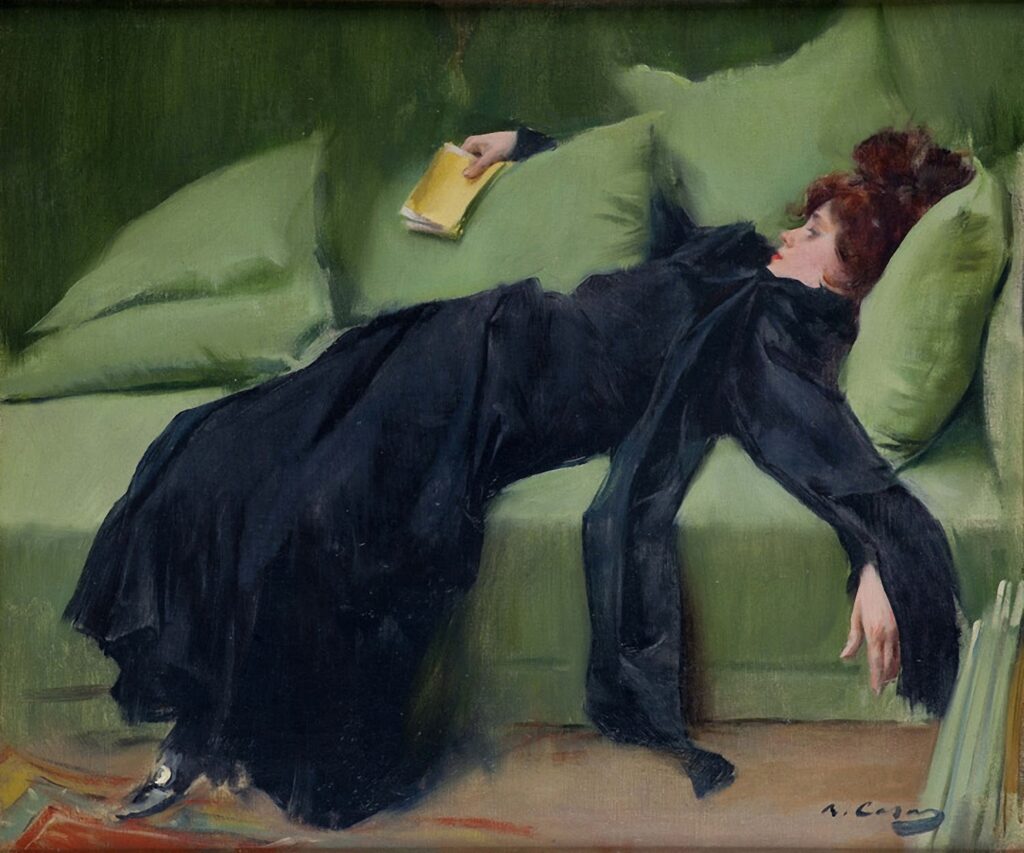
Ramón Casas, A Decadent Girl, 1899, Museum of Montserrat, Montserrat, Barcelona, Spain.
In his work, Casas focused mostly on portraits and group scenes. He avoided landscapes and still-life paintings; it seems people interested him more than experimenting with pure form. He exceled at capturing the mood of his sitter and the tension of the group scenes he painted. The artist focused on transmitting human emotion using subtle means above all else.
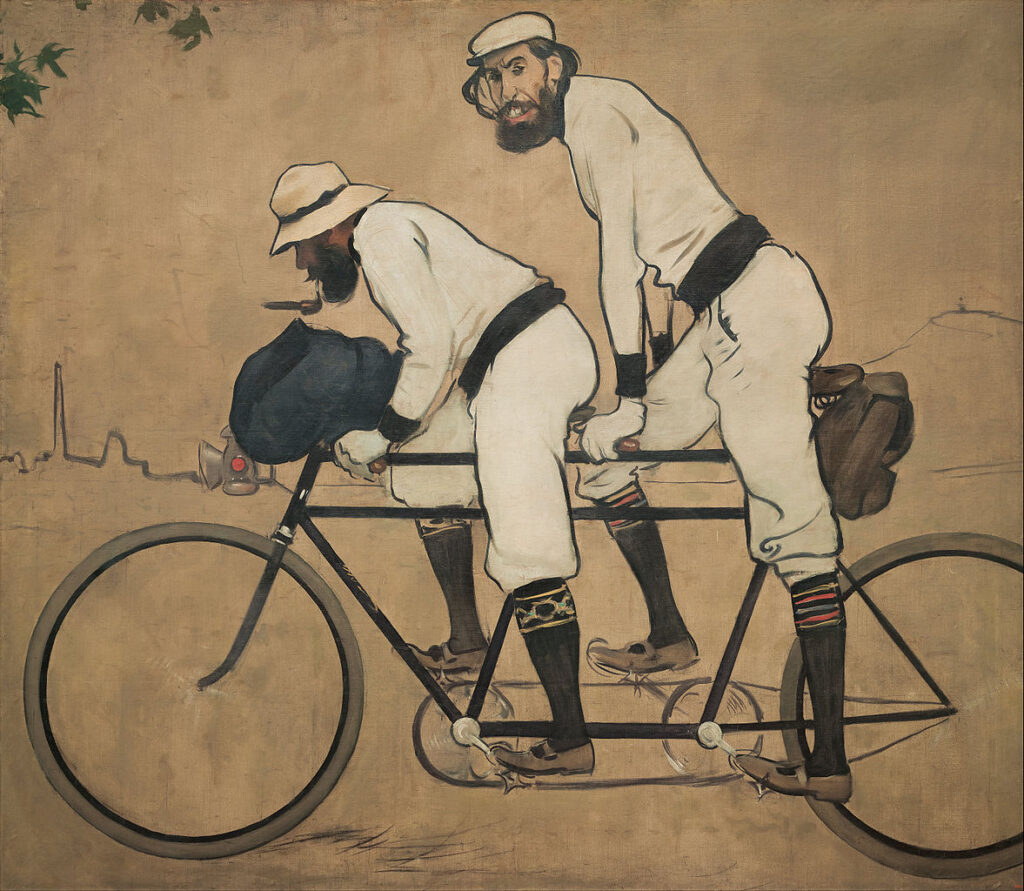
Ramón Casas, Ramon Casas and Pere Romeu on a Tandem, 1897, Museu Nacional d’Art de Catalunya, Barcelona, Spain.
In 1897 the final puzzle piece fell into place to consolidate the modernisme artistic environment; Els Quatre Gats was created. The bar was inspired by Le Chat Noir in Paris and co-founded by Casas together with Pere Romeu. For the next six years the bar would become a focal point of the Barcelonian boheme, visited even by young Pablo Picasso.
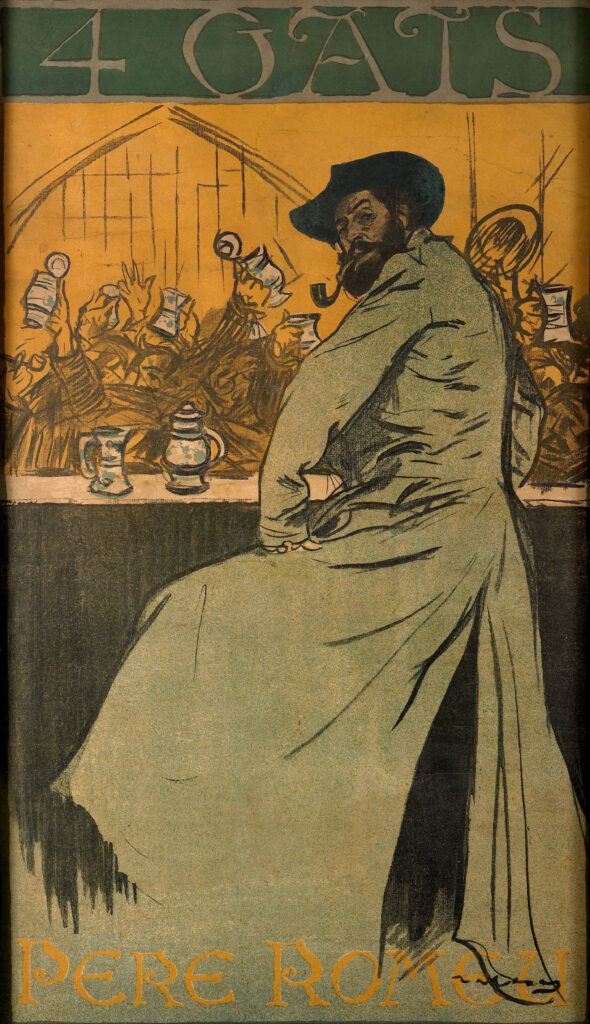
Ramón Casas, 4 Gats, Museu Nacional d’Art de Catalunya, Barcelona, Spain.
While Ramón Casas continued to develop his career as a painter, with his first solo show in 1899, he also ventured into graphic design. In this area of his work he fully embraced the modernisme style. He worked on posters promoting Els Quatre Gats, but also for brands such as Codorníu.
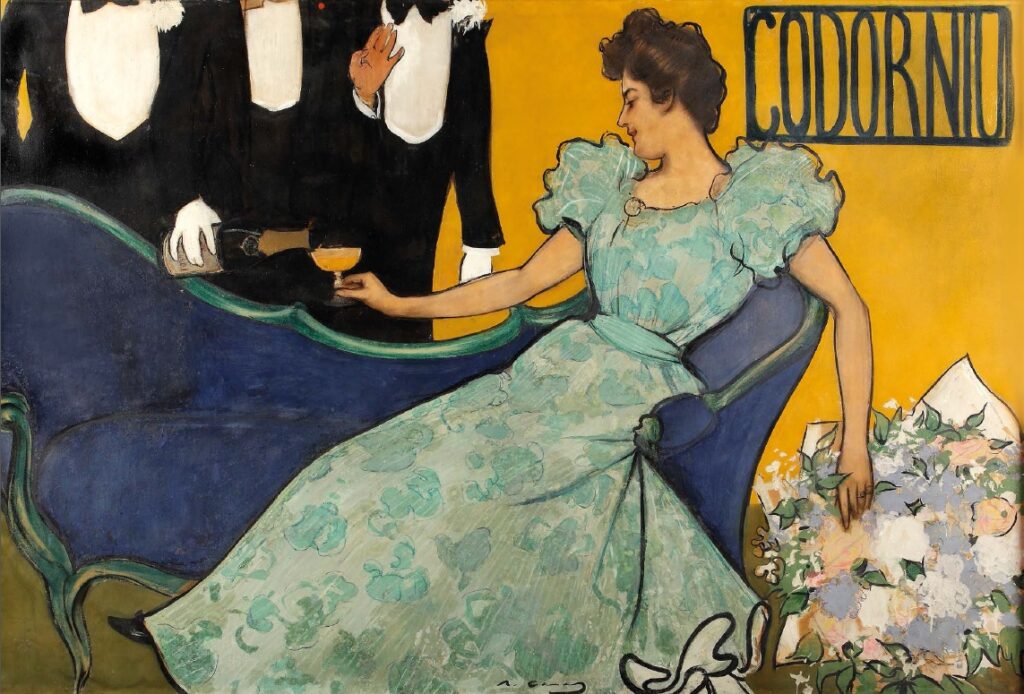
Ramón Casas, Poster for Cava Codorniu. Descubrir el Arte.
The early 1900s were a time when Ramón Casas’ position solidified. He exhibited and was awarded prizes at numerous salons. By 1904 during his stay in Madrid, he met and befriended Joaquin Sorolla, and one of his paintings was acquired by an American collector, Charles Deering. This was a turning point in his career, as Deering proved a faithful friend and extremely supportive patron.
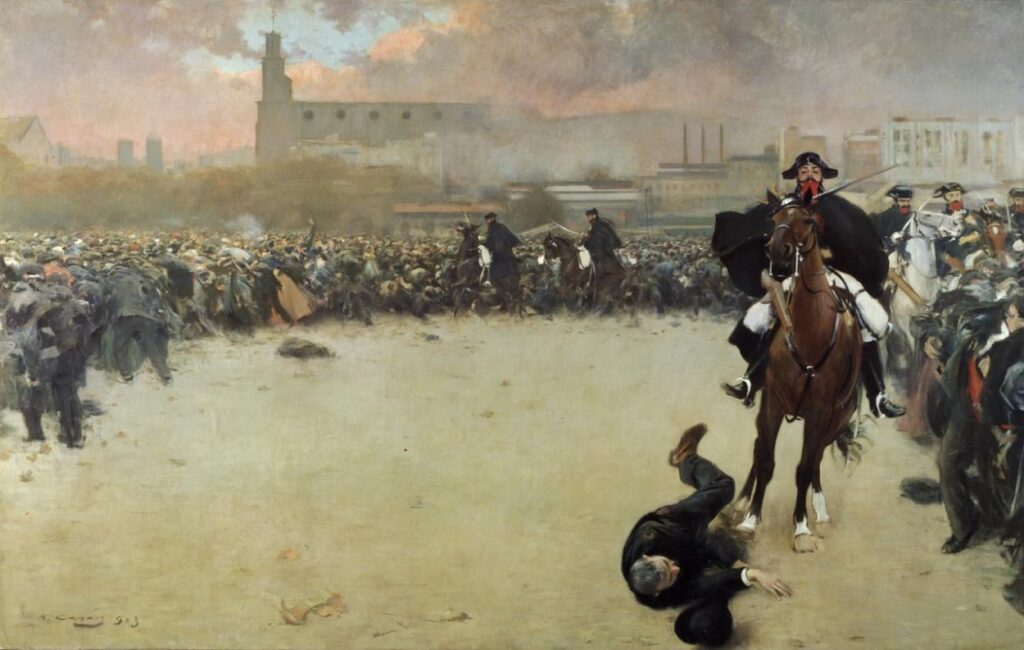
Ramón Casas, The Charge, 1902, Museu Comarcal de la Garrotxa, Olot, Girona, Spain.
This is also when he met Júlia Peraire, who became his model, lover, and eventually his wife, despite objections from his traditional family. He married Júlia in 1922, and their relationship stood the test of time and familial disapproval.
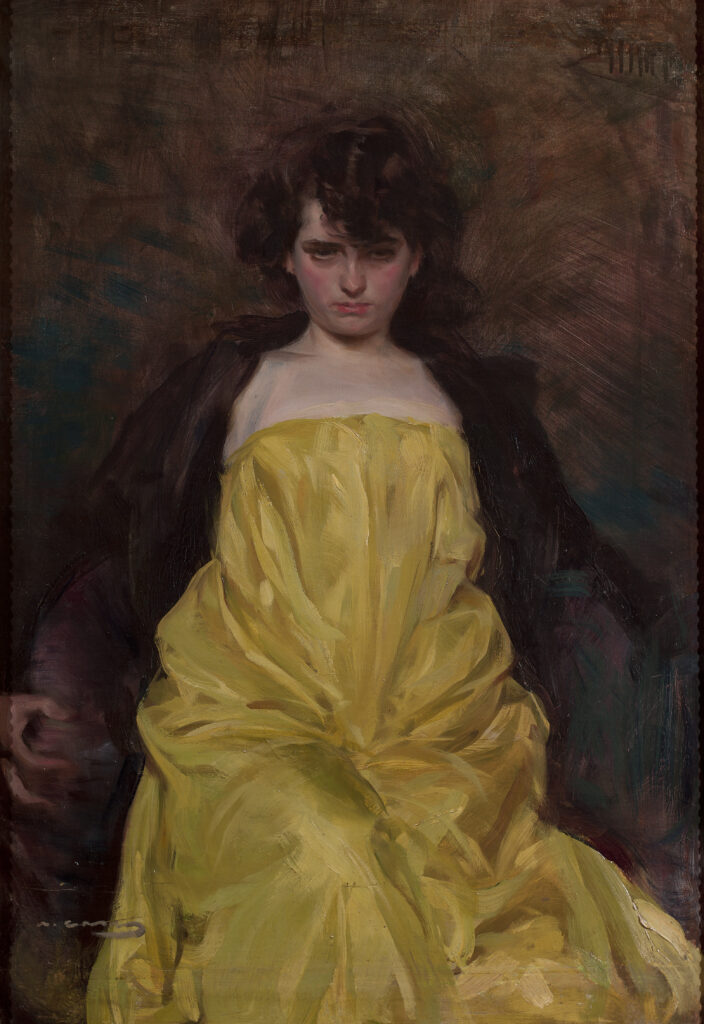
Ramón Casas, La Sargantain, 1907, Gran Teatro del Liceo, Barcelona, Spain.
Ramón Casas also had ties with architecture. While not a designer himself, he was involved in projects undertaken by his patron, in which he may have also been consulting. In 1908 Deering bought a former hospital in Sitges to turn it into a holiday residence. Additionally, upon his mother’s death in 1907, Ramón Casas inherited the monastery of Sant Benet de Bages, restored by Josep Puig i Cadafalch. And to top all of this in 1916 Deering and Casas traveled to the village of Tamarit in Catalonia, which Deering purchased on the spot and promptly charged the artist with its restoration.
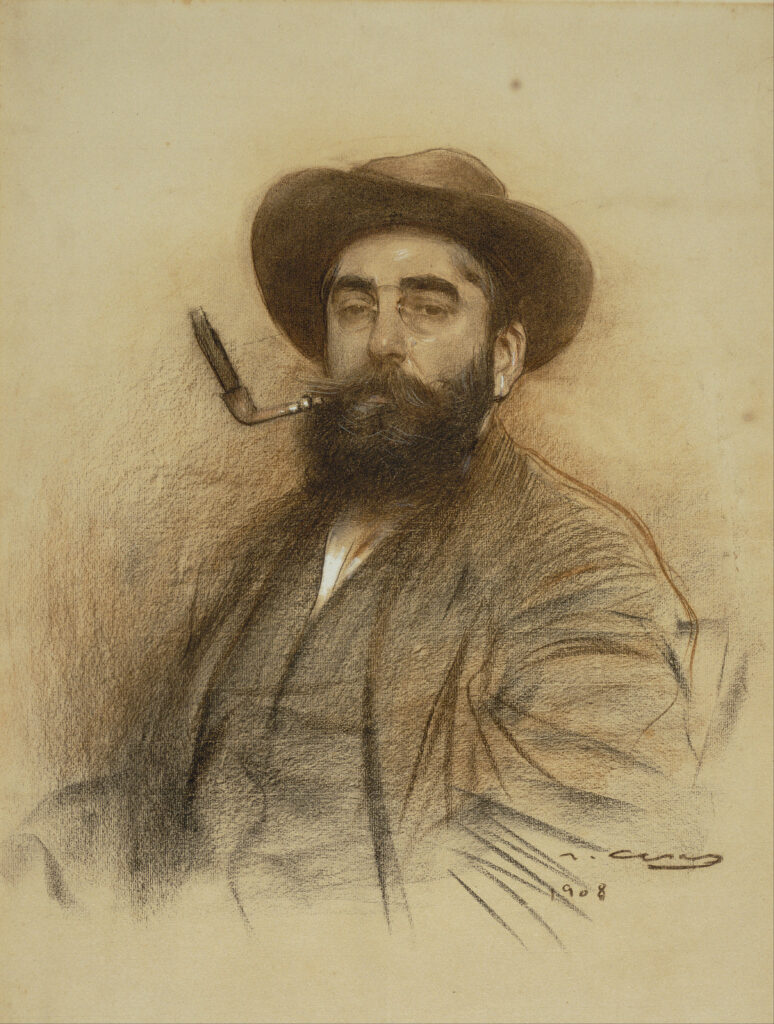
Ramón Casas, Self-Portrait, 1908, Museu Nacional d’Art de Catalunya, Barcelona, Spain.
As Ramón Casas’ fame and prosperity grew his style solidified, and he focused more and more on portraiture and gradually fell out of the avant-garde. By the time of his death, he was firmly a painter of the past.
DailyArt Magazine needs your support. Every contribution, however big or small, is very valuable for our future. Thanks to it, we will be able to sustain and grow the Magazine. Thank you for your help!